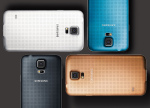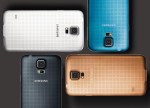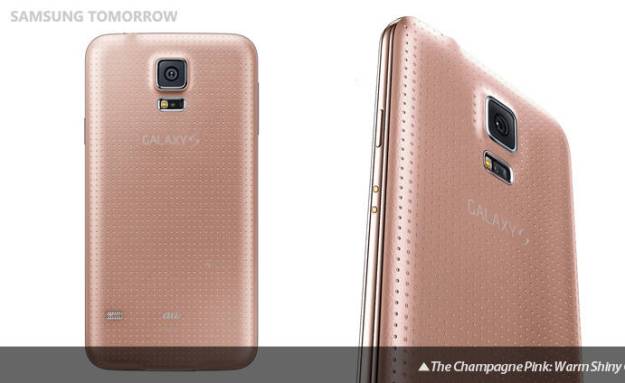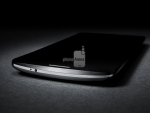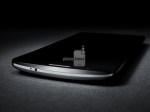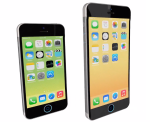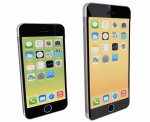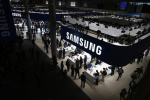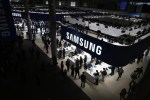These are some of the most hilarious texts moms have ever sent
Just because Mother’s Day is over doesn’t mean we should stop appreciating our moms. And what better way to appreciate them than to point and laugh while they try hopelessly to understand and utilize new technology?
Autocorrect fails are always pretty funny. But when it comes to texting, nothing is funnier than watching a parent or grandparent fumble around a smartphone as they try to communicate the only way their children and grandchildren know how: by texting.
BuzzFeed has gathered together some of the most hilarious mom texts around and assembled them into a short video.
Watch as one mom can’t stop saying “space” between words while dictating a message to Siri. See another mom try to use hashtags in her text messages, and watch a third repeatedly send photos taken while her finger covered the camera lens.
I’m sure we can all relate.
The full video is embedded below.
Read more here: Boy Genius Report
New versions of Samsung’s Galaxy S5 look even more like band-aids
Samsung has already started its usual color spamming for flagship devices by preparing the launch of pink versions of the Galaxy S5 in Japan. So far, the Galaxy S5 has been available only in four colors, including white, black, gold and blue, but it’s likely the giant Android handset maker will release more color options in the future, just as it did with the Galaxy S4 and the Galaxy S3 in previous years following their respective launches.
The Japan-only Galaxy S5 pink models include two flavors: “the sweet pink” called Soft Metallic Rose, and “the champagne pink” or Warm Shiny Gold. The two Galaxy S5 versions will be available starting with May 15 in the region from NTT DoCoMo and KDDI, respectively.
The Galaxy S5 will also available in black and white in Japan, colors “targeted for male consumers and for unisex, respectively.” Apparently, Samsung relied on a study to determine the third color for female users, with pink being “the most preferred color for Japanese female users, from teenagers to those in their fifties.”
Samsung’s plastic design for the Galaxy S5 has been widely criticized, with the pattern on the phone’s back cover likened to band-aid designs. Even Samsung has somewhat acknowledged its design issues, reshuffling the leadership of its mobile design team while its marketing arm was building more buzz around the Galaxy S5’s plastic design and cool factor.
It’s not clear at this time when the pink Galaxy S5 versions will be available to international customers. Images showing the Soft Metallic Rose and Warm Shiny Gold versions follow below.
Read more here: Boy Genius Report
This smart home lighting setup could help you save money on your electricity bills
Sonne Industries on Wednesday launched its Kickstarter crowd-funding campaign for the Light Sentry, a smart home lighting system that could help users save money on their indoor and outdoor lighting setups. The Light Sentry system will use a Natural Light Sensor to automatically power lights to desired intensity levels, adjusting them to environmental conditions, seasonal changes and even time.
Placed in an area with exposure to sunlight, the Natural Light Sensor will communicate with other Light Sentry components, including Portable Power Gates, that will be plugged into any outlet and connected to lights and other devices. The system will then continuously monitor lighting conditions and make adjustments in order to improve power consumption efficiency. Furthermore, users will be able to set up their Light Sentry from a PC and Mac computer, and further customize their home or office lighting needs.
The company notes that according to a 2009 Residential Energy Consumption Survey, appliances, electronics and lighting make up 35% of U.S. households energy usage each year, or $1,400 in annual costs. Light Sentry users are expected to save 32% in energy for a single 60 watt bulb that’s used 5 hours per day.
Light Sentry needs $200,000 to become a commercial product, with pledges ranging from $5 to $10,000. Once the funding goal is reached, the products will ship by the end of November. The cheapest Light Sentry setup costs $159, which is $90 off its future retail price.
A video showing how the Light Sentry system would work follows below.
Read more here: Boy Genius Report
What Microsoft got wrong with Kinect and the Xbox One
Many Xbox fans are understandably divided over Microsoft’s decision to unbundle the Xbox One from the Kinect sensor, and I think both sides make good arguments for and against the decision. While I personally supported unbundling Kinect from the Xbox One and selling the console by itself for $100 less, I do understand that the decision is potentially risky for Microsoft.
The biggest reason this might be a mistake is that Microsoft had been relying on Kinect as its biggest differentiator from the PlayStation 4. This difference went beyond just marketing the console to gamers, too: Microsoft had encouraged game developers to make games that worked with the Kinect sensor and told them that it would never consider unbundling Kinect from the console. Xbox One was Kinect, Kinect was Xbox One.
Now that Microsoft has made Kinect and optional part of the Xbox One package, it will almost certainly hurt Microsoft’s efforts to get more developers to create Kinect-centric games. In fact, unbundling Kinect will send a signal to developers that Microsoft has lost faith in the technology’s potential to be a big differentiator capable of changing the way we think about video games.
This is a very legitimate concern and is a potential long-term problem for Microsoft. That said, I think the biggest mistake with Kinect wasn’t that Microsoft decided to bundle it with the Xbox One — it was that it decided to bundle it with the Xbox One without offering any games right off that bat that made it a truly compelling experience.
Compare this to what Nintendo did with the original Wii. When Nintendo first launched the Wii it made sure to include Wii Sports as a pack-in with every console it sold outside of Japan. This ensured that everyone who bought the console would have a game they could use right from the start that would get them hooked on Nintendo’s radical new Wii Remote controller.
Kinect, on the other hand, is an incredibly cool piece of technology that Microsoft has promised would pay dividends down the road. But that’s just the problem: Kinect seems like it could become a revolutionary new way to play games but right now it just isn’t. Instead, it’s a nifty option that was made part of a mandatory bundle and that added $100 to the Xbox One’s price tag.
I think the bigger lesson here is not that Microsoft should stop trying to be ambitious and creative when it comes to changing how we play games. Rather, it should make sure that its potentially revolutionary new technology has at least one game ready to go at launch that shows off its unique potential and draws gamers in. For this console generation, Microsoft just couldn’t manage to pull it off.
Read more here: Boy Genius Report
This is the LG G3
LG has already confirmed the name of its next-gen flagship smartphone and has scheduled a late May press event for it while many reports and leaks have presented hardware details for the handset, and many leaked images. Adding further fuel to the fire, PhoneArena has obtained the first press shots of the G3, which reveal many details for the upcoming high-end handset and are consistent with previous leaks.
From the looks of it, LG may use a metal case for the G3, and the phone is expected to sport a large, almost bezel-free display – LG has already confirmed the phone will have a high-resolution 5.5-inch QHD screen. As previous leaks revealed, the phone’s buttons will still be found on the back, just like with its predecessor, and the G3 seems to have an additional sensor on the back next to the camera – some rumors did say the G3 will have its own fingerprint scanner.
The phone will likely launch in three color versions, including black, white and gold, assuming these images are indeed showing the actual product.
On the hardware side, the handset is rumored to pack a Qualcomm Snapdragon 805 processor, 3GB of RAM and a 13-megapixel camera with optical image stabilization.
The leaked G3 press renders obtained by the publication follow below.
Read more here: Boy Genius Report
Classic metal may make new Forza 5 pack our favourite ever [w/video]
Filed under:
We’re usually pretty enthused every time Turn 10 Studios unveils another of its monthly car packs for Forza Motorsport 5. It means we’ll have an entirely new batch of vehicles to play with when the work day finally ends, whether that means we race, tune, style or simply crash them. This latest car pack, though, the Meguiar’s Car Pack, is arguably one of the most interesting that we’ve seen.
On the surface, there are some pretty standard cars here. The BMW M3 DTM car is going to be an extremely cool addition to the game, as is the Aston Martin V12 Zagato. Where this car pack gets interesting, though, are in the number of classics on offer. Sure, a 1957 Chevrolet Bel-Air might not be too special in a game like Forza. We could say the same of a 1967 Chevelle. What about an Aston Martin DBR1, though? Or the bootlegger’s dream – the 1940 Ford De Luxe Coupe? Yes, there are some seriously weird gems in this car pack.
Both the 1973 Mazda RX-3 and the underappreciated, Lotus-tuned Ford Cortina are featured here, while we can add one more Alfa Romeo to Forza’s stable with the gorgeous 1986 GTV-6 (this writer is still holding out hope for the appearance of a Montreal or SZ in a future car pack). Rounding out the group is the Dodge Dart Hemi Super Stock.
Turn 10 put together a short video composed of in-game footage of the cars. Scroll down and have a peak at the video, as well as the press release, which describes each car. The Meguiar’s Car Pack for Forza Motorsport 5 is currently available for download, and costs $9.99 (naturally, it’s free for Season Pass owners).
Classic metal may make new Forza 5 pack our favourite ever [w/video]
Classic metal may make new Forza 5 pack our favourite ever [w/video] originally appeared on Autoblog Canada on Wed, 14 May 2014 11:00:00 EST. Please see our terms for use of feeds.
Permalink | Email this | Comments
Read more here: Ford News
Massive 5.5-inch iPhone 6 phablet mockup compared to iPhone 5s in new leak
As we predicted when we first saw a leaked purported case for the giant 5.5-inch iPhone 6, mockups of Apple’s larger iPhone are starting to sprout up all over the web. Japanese website Rocket News 24 has taken the dimensions shown in the leaked case and has made a 3D printed mockup of the larger iPhone 6 and compared it side-by-side with the iPhone 5s and the contrast between the two is pretty stunning.
As you can see, the 5.5-inch mockup absolutely dwarfs the iPhone 5s, although interestingly you can tell that the larger iPhone is actually slightly thinner than the 5s. Based on the leaked purported iPhone phablet case we saw earlier this week, we can estimate that the larger iPhone 6 will measure in at 81 millimeters wide, 157 millimeters long and 7 millimeters thick, which makes it both larger and slimmer than the iPhone 5s’s dimensions of 123.8 millimeters long, 58.6 millimeters wide and 7.6 millimeters thick.
Given how absolutely gigantic the larger iPhone looks, you might be worried about whether it will fit as comfortably into your hand as the classic iPhone models. The truth is that it most definitely won’t, even though Apple has decided to give the upcoming iPhone models rounder edges to make them feel more comfortable to hold. However, Samsung’s Galaxy Note phones similarly have rounded edges so if you don’t feel comfortable holding one of them in your hands then you might not want to buy a 5.5-inch iPhone 6.
Be sure to check out our previous coverage of leaked mockups of the 4.7-inch iPhone 6 being compared to the Galaxy S5, the HTC One (M8) and the iPhone 5s.
You can see more of Rocket News 24′s pictures comparing the 5.5-inch iPhone 6 dummy to the iPhone 5s by clicking the source link below.
Read more here: Boy Genius Report
Another huge reason for cable companies to fear cord cutters
Pay TV companies hate cord cutters. The logic behind that hatred seems fairly obvious: pay TV packages are huge revenue generators for these giant companies, and ditching them leads to lost revenue. But there’s another reason pay TV giants like Comcast and Time Warner Cable are afraid of the cord cutting movement. Cord cutters don’t just lead to lost revenue, they also cost companies more money than average subscribers.
According to a new report from broadband service provider Sandvine, cord cutters use much more broadband data than Internet subscribers who also pay for a TV package. This makes sense, of course, since cord cutters with no TV package stream video over the Internet much more often than other subscribers.
What may be a bit surprising, however, is just how much data cord cutters consume each month.
Sandvine says that the typical home broadband subscriber goes through an average of 29GB of data each month, Re/code reports. But households that have cut the cord use an average of 212GB per month, or about seven times more data than the bulk of ISPs’ customers.
Needless to say, the difference is massive.
Service providers charge more for Internet packages when subscribers don’t bundle broadband service with a TV package, but the difference in pricing might not be enough to account for this huge spike in data usage that is eating into cable companies’ margins.
In other words, don’t be surprised if you start seeing the idea of home broadband data caps pop up more frequently in the coming months and years.
Read more here: Boy Genius Report
iPhone 6 release time frame FINALLY revealed!
The cycle of rumors ahead of Apple’s next-generation iPhone 6 launch this year is staying true to form. First, people assume that the new iPhone’s release will take place in the early fall, around the same time that last year’s model debuted. Then reports pop up to suggest that Apple’s next-gen smartphone will actually launch sooner than expected during the early summer months. Next, rumors slowly push the expected launch date back until we’re right back where we started.
It happened in 2012, it happened last year, and it is happening again this year.
Following rumors suggesting the iPhone 6 would launch in July and then August, a new report from German Apple blog iFun suggests that the launch will take place in September. The report cites unnamed sources in claiming that Apple Stores in Germany will restrict employee vacation time in September in order to ensure that all hands are on deck for the iPhone 6 launch.
Apple restricts vacation time ahead of and during its iPhone launches each year, though it typically doesn’t begin informing employees of this restriction until much closer to the iPhone’s release date.
While reports attempting to pinpoint the next iPhone’s release time frame have been all over the map during the past few months, the smart money has remained on a September release. Extremely reliable Apple analyst Ming-Chi Kuo reported back in early April that Apple’s iPhone 6 would debut late in the third quarter.
According to Kuo, the iPhone 6 will feature a brand new design with a 4.7-inch, 1,334 x 750-pixel display, as well as a new Apple A8 processor and NFC. The analyst also says that a second new iPhone model with similar specs and a 5.5-inch full HD screen will launch sometime later in the fourth quarter.
Want to know what the iPhone 6 will look like? Be sure to check out iPhone 6 vs. iPhone 5s: New leak gives us a better look at huge redesign.
Read more here: Boy Genius Report
Samsung’s next phablet may arrive with unexpected company
Samsung will reportedly launch its own version of Google Glass this fall, maybe right alongside the new Galaxy Note 4 handset that should be unveiled at IFA 2014 in Berlin, Germany. Business Korea has learned from a Samsung associate that the Gear Glass will also debut at IFA, a show that Samsung has used so far for new Galaxy Note announcements. Interestingly though, last year Samsung announced its first smartwatch ever, the Galaxy Gear, together with the Galaxy Note 3.
“We rolled out the smartwatch first, and have secured a considerable amount of smart glass-related technology and patents,” an unnamed Samsung associate said. “Following the roll out of our smart watch Galaxy Gear in September last year, we are slated to introduce our smart glass Gear Glass this September.”
Gear Glass will apparently run next-gen Tizen OS, and feature an earpiece and a display, “enabling people to listen to music with the right ear while looking at the display with the right eye,” according to the publication. Images or hardware details for Gear Glass aren’t available yet.
It’s not clear how much Gear Glass will cost or when it’ll be available to buyers, but Samsung appears to be very determined to sell as many wearable devices as possible. The company has already launched three smartwatches and a fitness band, and has a special health-related event planned for May 28.
Comparatively, Google Glass costs $1,500, at least the Explorers version, and it’s available to any U.S. buyer interested in the device. However, Google’s wearable device is still in beta, and the company is yet to announce international commercial availability for it.
Read more here: Boy Genius Report








